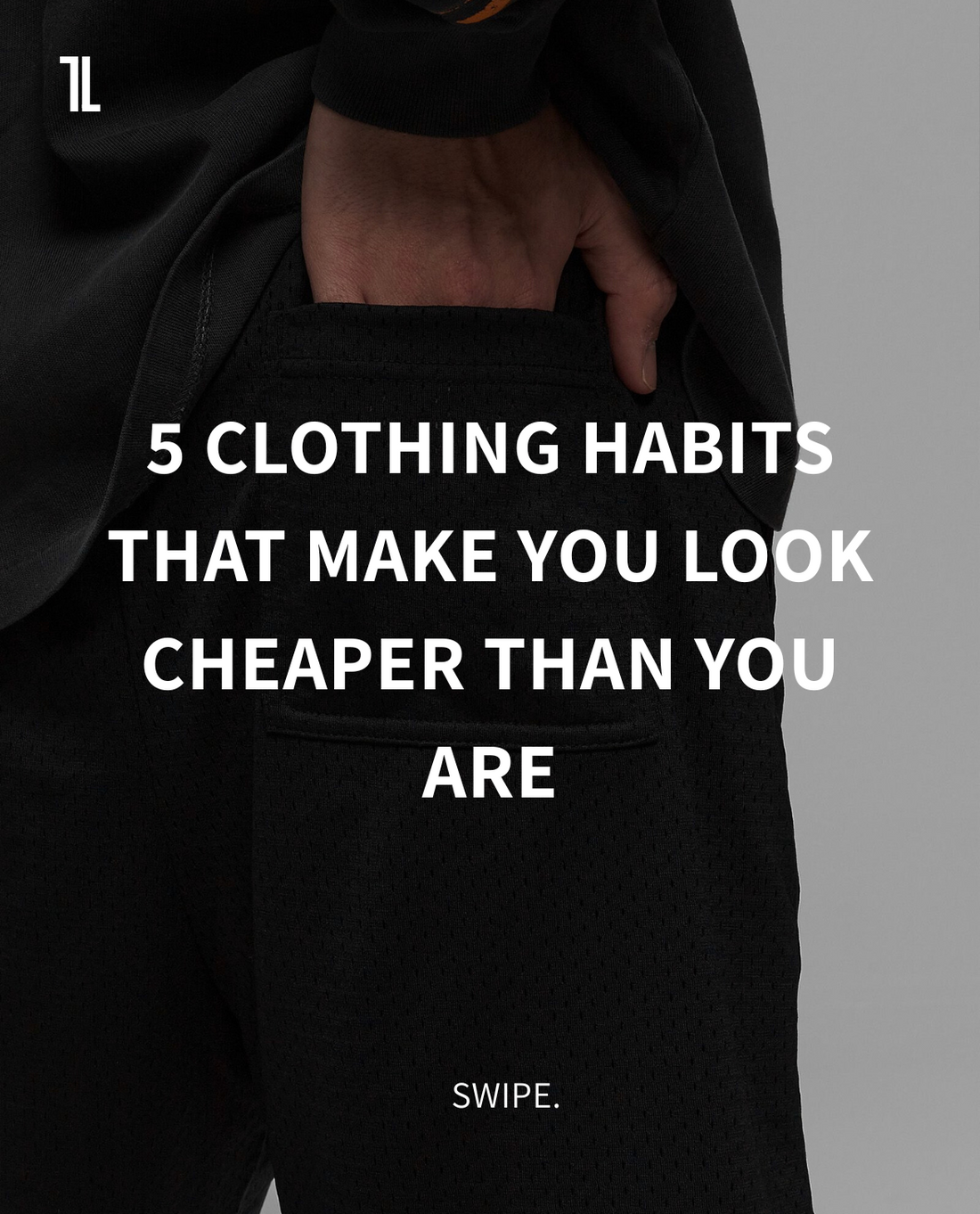
5 CLOTHING HABITS THAT MAKE YOU LOOK CHEAPER THAN YOU ARE
Style isn’t just about what you buy — it’s about how you wear, maintain, and present it. Even the best brands can look watered down if small details are ignored. Here are five habits that silently cheapen your look, and how to fix them.
1. Wearing Faded Black
Black should feel bold, sharp, and intentional. Once it starts greying out or looking washed, it takes the shine off your entire outfit — even if every other piece is luxury. That hoodie or pair of jeans you loved instantly feels like a knock-off when the color loses depth.
Fix: Wash darks inside out. Avoid dryers, let them air dry. And if needed, re-dye them. Black should always feel rich.
2. Over-Ironing or Shiny Fabric Burn
You know that overly glossy patch on trousers or shirts? That’s not style, that’s heat damage. It screams carelessness, like you’re rushing to cover up instead of respecting the piece.

Fix: Use a pressing cloth or lower the heat. Better yet, invest in a steamer — it refreshes fabric without burning it.
3. Logo Overload
Wearing too many visible brand names at once makes you look like you’re trying too hard. Instead of elevating your presence, it cheapens the aura. Real style doesn’t need to shout — it speaks.
Fix: Silence has power. Mix in minimal pieces that balance out the statement logos. Let your fit show confidence, not insecurity.
4. Clothes That Don’t Fit Your Frame
Streetwear isn’t an excuse for sloppiness. A designer tee two sizes too big doesn’t read as intentional — it just looks like stress. The wrong fit can swallow your silhouette, no matter the price tag.

Fix: Tailor your fit. Choose pieces that follow your frame and proportions. Oversized works when it’s cut that way, not when it’s just the wrong size.
5. Too Many Loud Colours, No Direction
Red, blue, yellow, green, orange — all at once — isn’t bold, it’s chaos. Great style isn’t about stacking colours, it’s about how well you let one shade command attention. Think control, not confusion.

Fix: Learn colour harmony. Use a colour wheel and start pairing complementary shades. Elevation comes from restraint, not excess.